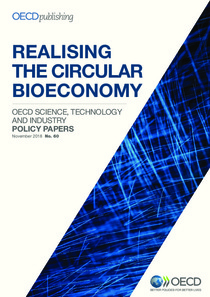Realising the circular bioeconomy
"First the bioeconomy and then circular economy have gained political traction during the second decade of this century. There are synergies to be exploited, but also potential misalignments. The movement of bioeconomy toward the use of wastes, co-products and residue sources resonates well wit...
| Main Authors: | , |
|---|---|
| Institution: | ETUI-European Trade Union Institute |
| Format: | TEXT |
| Language: | English |
| Published: |
Paris
2018
OECD |
| Subjects: | |
| Online Access: | https://www.labourline.org/KENTIKA-19304867124911220499-Realising-the-circular-bioecon.htm |
| Summary: | "First the bioeconomy and then circular economy have gained political traction during the second decade of this century. There are synergies to be exploited, but also potential misalignments. The movement of bioeconomy toward the use of wastes, co-products and residue sources resonates well with circular economy principles of making the most efficient of uses of natural resources, as does as transition in focus from virgin to secondary materials in production. However, poorly aligned waste characterisation as well as biomass competition reflect both theoretical and practical conflicts between industrial and environmental policy. Further, waste markets can be disrupted as some materials that currently go to recycling, landfill or incineration could in the future be bound for biorefineries, with implications for waste management markest and public infrastructure. Policies promoting the cascading use of biomass could help mitigate these tensions by achieving high resource productivity." |
|---|---|
| Physical Description: | 74 p. Digital |

